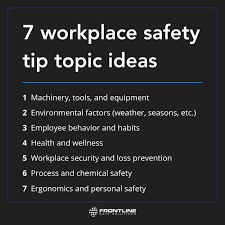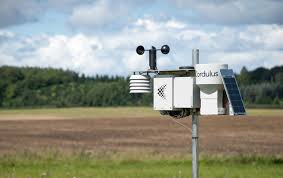The Importance of Emergency Preparedness Equipment
When disaster strikes, being prepared can make all the difference in ensuring your safety and well-being. One crucial aspect of emergency preparedness is having the right equipment on hand to help you navigate through challenging situations. From natural disasters like hurricanes and floods to unexpected power outages, having the proper emergency supplies can be a lifesaver.
Essential Emergency Preparedness Equipment
Here are some key items that should be included in your emergency preparedness kit:
- Water and Food: Stock up on non-perishable food items and an ample supply of water to last at least 72 hours per person.
- First Aid Kit: Ensure your first aid kit is well-stocked with bandages, antiseptic wipes, pain relievers, and other essential medical supplies.
- Flashlight and Batteries: In case of power outages, a reliable flashlight with extra batteries is essential for illumination.
- Emergency Radio: A battery-powered or hand-crank radio can keep you informed about weather updates and emergency alerts.
- Multi-Tool: A versatile multi-tool can come in handy for various tasks during emergencies, such as repairs or opening cans.
- Blankets and Warm Clothing: Stay warm during cold weather with blankets, extra clothing layers, and thermal blankets.
- Cash: Keep some cash on hand in case ATMs are inaccessible during emergencies that disrupt electronic transactions.
Additional Considerations
In addition to these essentials, it’s important to customize your emergency kit based on your specific needs and circumstances. Consider factors such as any medical conditions you have, the number of people in your household, and the unique risks present in your area when preparing your emergency supplies.
Regularly review and update your emergency preparedness equipment to ensure that everything is in working order and that supplies have not expired. Being proactive about emergency preparedness can provide peace of mind knowing that you are ready to face whatever challenges may come your way.
Top 5 Benefits of Emergency Preparedness Equipment: Ensuring Safety and Peace of Mind
- Enhances safety and security during emergencies
- Provides peace of mind knowing you are prepared for unexpected events
- Increases chances of survival and reduces risks during disasters
- Empowers individuals to take control of their well-being in crisis situations
- Helps mitigate the impact of emergencies on health and property
Challenges of Emergency Preparedness Equipment: Costs, Maintenance, and More
- Costly to acquire a comprehensive set of emergency preparedness equipment.
- Requires regular maintenance and replacement of perishable items like food and batteries.
- May take up storage space, especially for larger or bulkier items.
- Some equipment may have limited shelf life or expiration dates, requiring frequent updates.
- Certain specialized equipment may require training or knowledge to use effectively in emergencies.
- Difficult to predict the exact type of emergency that will occur, leading to uncertainty in selecting the most relevant equipment.
- Over-reliance on equipment can sometimes overshadow the importance of other preparedness measures such as communication plans.
Enhances safety and security during emergencies
Having the right emergency preparedness equipment significantly enhances safety and security during emergencies. By being well-equipped with essential supplies such as first aid kits, flashlights, and emergency radios, individuals can effectively respond to crisis situations with confidence. These tools not only help in navigating through challenging conditions but also provide a sense of reassurance and control in uncertain times. Being prepared ensures that individuals can prioritize their safety and well-being, ultimately minimizing risks and increasing their chances of survival during emergencies.
Provides peace of mind knowing you are prepared for unexpected events
Having the right emergency preparedness equipment offers a sense of security and peace of mind, knowing that you are equipped to handle unexpected events effectively. By having essential supplies readily available, you can face emergencies with confidence and readiness, reducing anxiety and uncertainty in challenging situations. Being prepared not only ensures your safety and well-being but also allows you to focus on taking necessary actions calmly and efficiently when faced with unforeseen circumstances.
Increases chances of survival and reduces risks during disasters
Having the right emergency preparedness equipment significantly enhances the likelihood of survival and minimizes risks during disasters. By being well-prepared with essential supplies and tools, individuals can effectively navigate through challenging situations, increasing their chances of staying safe and secure. Being equipped with the necessary resources not only boosts resilience but also reduces vulnerabilities, enabling individuals to respond more effectively to emergencies and protect themselves and their loved ones from harm.
Empowers individuals to take control of their well-being in crisis situations
Having the right emergency preparedness equipment empowers individuals to take control of their well-being in crisis situations by providing them with the tools and resources needed to respond effectively. In times of uncertainty and danger, being equipped with essential supplies and knowledge allows individuals to act decisively, protect themselves and their loved ones, and navigate through emergencies with confidence. By taking proactive steps to prepare for potential disasters, individuals can enhance their resilience and readiness to face challenges head-on, ultimately ensuring a greater sense of security and self-sufficiency during crises.
Helps mitigate the impact of emergencies on health and property
Emergency preparedness equipment plays a crucial role in mitigating the impact of emergencies on both health and property. By having the necessary supplies and tools readily available, individuals can respond effectively to emergencies, reducing the risk of injuries or illnesses. Additionally, proper emergency preparedness can help protect property from damage, as quick access to essential equipment can aid in containment and recovery efforts. Being well-prepared ensures a proactive approach to handling emergencies, ultimately minimizing the potential negative outcomes on health and property.
Costly to acquire a comprehensive set of emergency preparedness equipment.
One significant drawback of emergency preparedness equipment is the financial burden associated with acquiring a comprehensive set of supplies. Building a robust emergency kit can be costly, especially when considering the purchase of items like first aid supplies, non-perishable food, water storage containers, flashlights, batteries, and other essential gear. For individuals or families on a tight budget, investing in all the necessary emergency preparedness equipment at once may pose a challenge. The expense involved in obtaining these items can deter some people from fully preparing for potential emergencies, leaving them vulnerable in times of crisis. Balancing the need for adequate preparedness with budget constraints is a common dilemma faced by many individuals and households.
Requires regular maintenance and replacement of perishable items like food and batteries.
One significant drawback of emergency preparedness equipment is the necessity for regular maintenance and replacement of perishable items such as food and batteries. Ensuring that these items are up to date and in good condition can be a time-consuming and costly process. It requires diligent monitoring of expiration dates, proper storage conditions, and timely restocking to guarantee that the supplies are effective when needed. Failure to keep up with this maintenance can compromise the reliability of the emergency kit, potentially leaving individuals unprepared during critical situations.
May take up storage space, especially for larger or bulkier items.
One significant drawback of emergency preparedness equipment is that it may require a considerable amount of storage space, particularly for larger or bulkier items. For individuals with limited storage capacity in their homes or living spaces, finding room to store emergency supplies can be challenging. This limitation can deter some people from fully equipping themselves with the necessary tools and resources needed to effectively respond to emergencies. Balancing the need for preparedness with the constraints of available storage space is a common concern for individuals striving to be ready for unexpected disasters.
Some equipment may have limited shelf life or expiration dates, requiring frequent updates.
One significant drawback of emergency preparedness equipment is that certain items have a limited shelf life or expiration dates, necessitating regular updates and replacements. This can add to the ongoing maintenance and cost of maintaining an emergency kit. Items like food, water purification tablets, medications, and batteries may lose their effectiveness over time, making it crucial to regularly inspect and refresh supplies to ensure their reliability in times of need. Failure to stay vigilant about monitoring expiration dates could compromise the effectiveness of the equipment when faced with an emergency situation.
Certain specialized equipment may require training or knowledge to use effectively in emergencies.
In the realm of emergency preparedness equipment, a notable drawback is that certain specialized tools and gear may necessitate specific training or expertise to utilize effectively during crises. While these items can be invaluable in critical situations, their full potential may only be realized by individuals with the requisite skills and knowledge. This potential limitation underscores the importance of not only possessing the right emergency supplies but also ensuring that users are adequately trained to leverage them optimally when faced with emergencies.
Difficult to predict the exact type of emergency that will occur, leading to uncertainty in selecting the most relevant equipment.
One significant challenge of emergency preparedness equipment is the difficulty in predicting the specific type of emergency that may occur, resulting in uncertainty when choosing the most appropriate gear. With a wide range of potential disasters, such as natural calamities, power outages, or medical emergencies, it can be challenging to anticipate the exact circumstances that will unfold. This unpredictability makes it hard to determine which tools and supplies will be most crucial in a given situation, highlighting the importance of maintaining a versatile and well-rounded emergency kit to address various potential scenarios.
Over-reliance on equipment can sometimes overshadow the importance of other preparedness measures such as communication plans.
In the realm of emergency preparedness, one significant drawback of relying too heavily on equipment is the potential to overlook the critical role of communication plans. While having the right tools and supplies is essential for addressing immediate needs during a crisis, an overemphasis on equipment can overshadow the importance of effective communication strategies. Communication plans play a vital role in coordinating responses, disseminating information, and ensuring that individuals are informed and connected during emergencies. Neglecting to prioritize communication preparedness alongside equipment readiness can hinder overall emergency response efforts and impact the ability to effectively coordinate resources and support.




